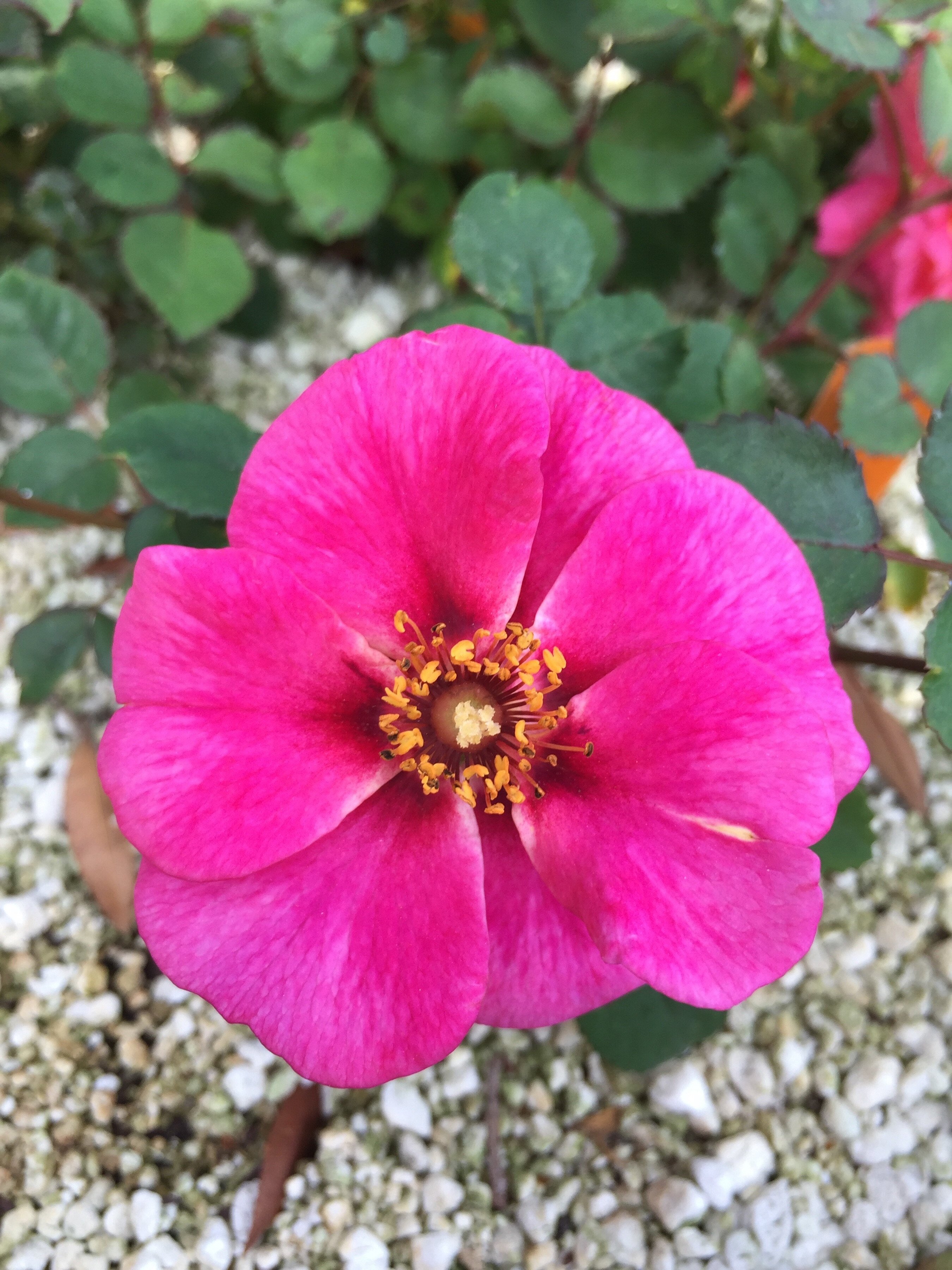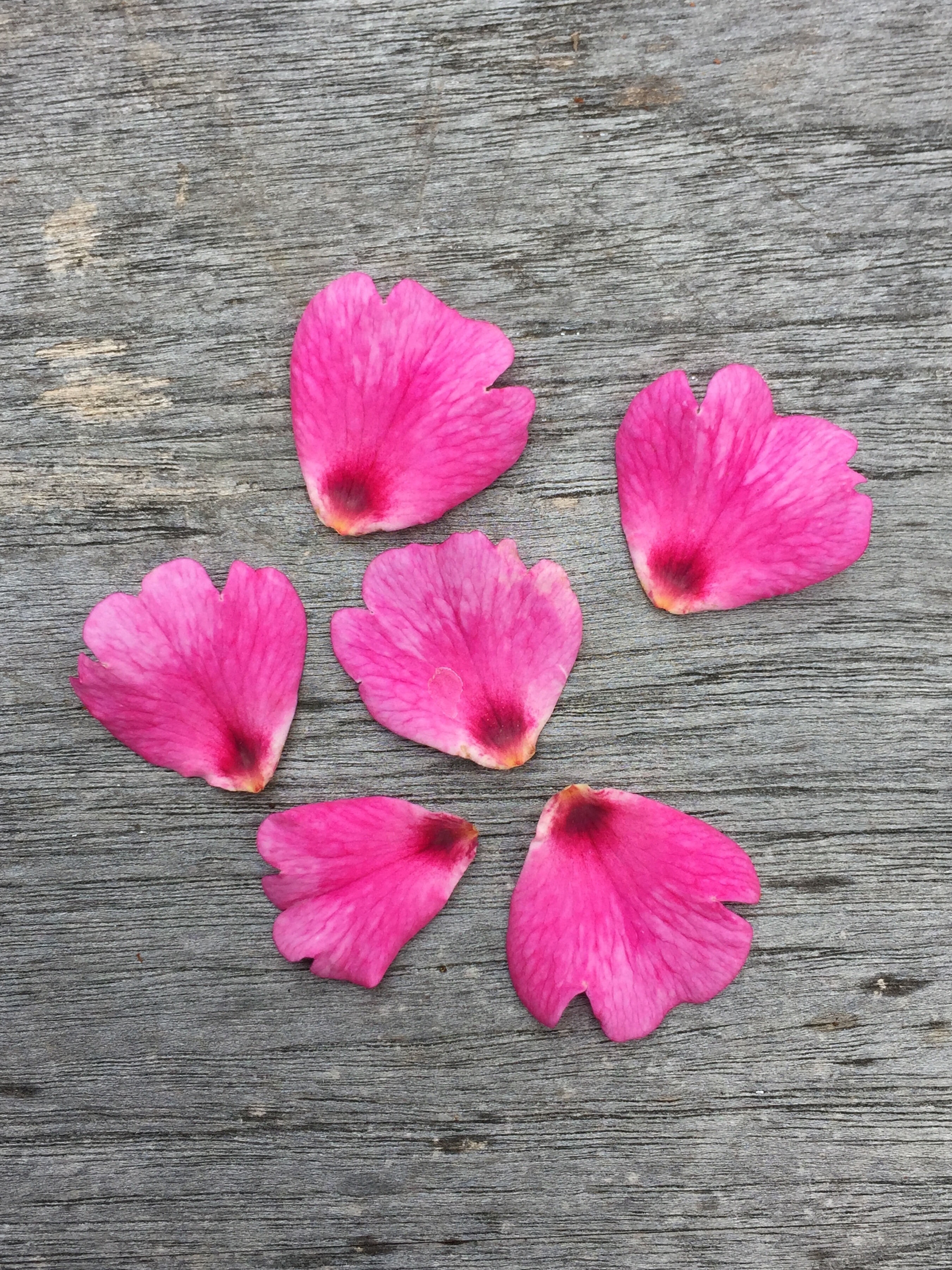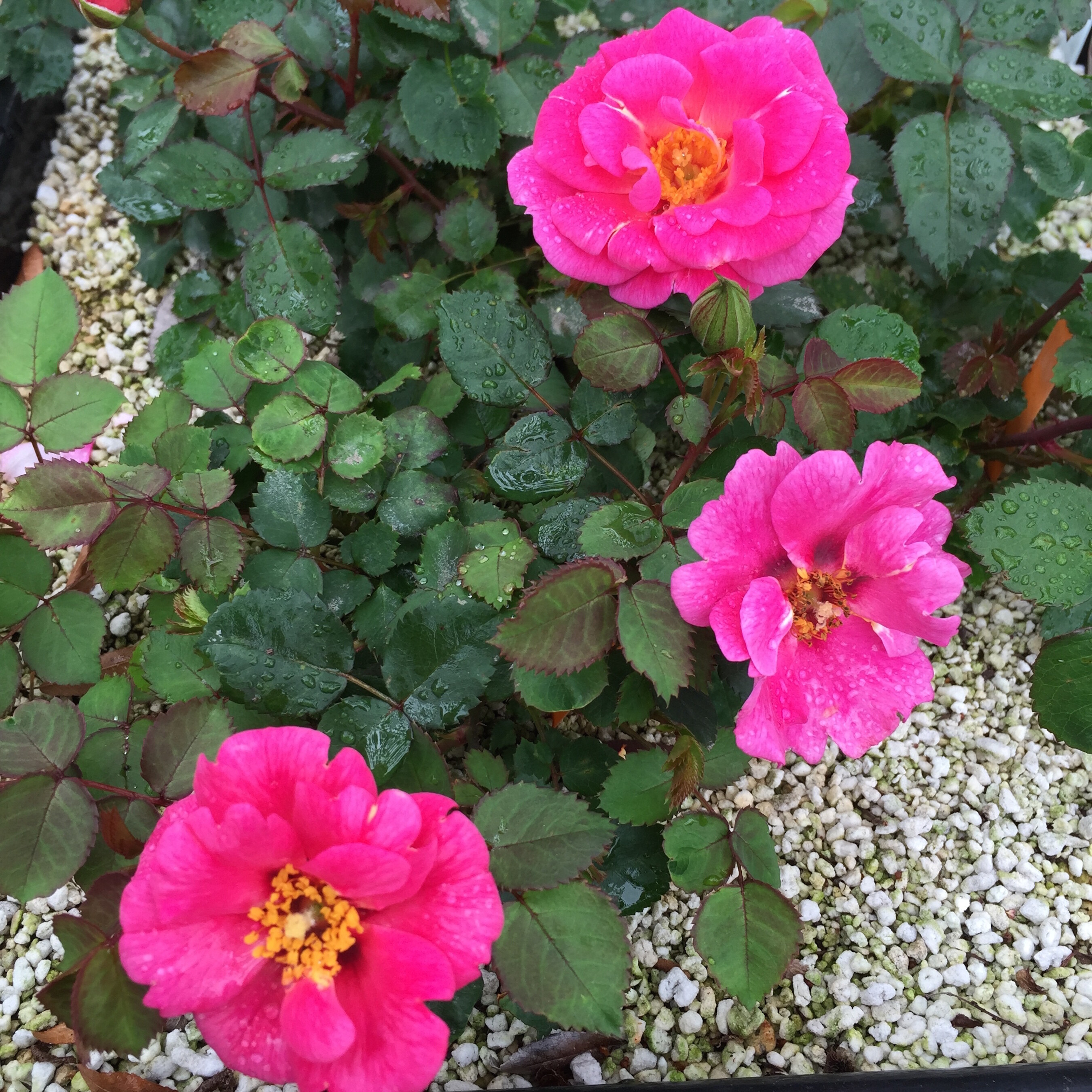Yes thank you. I sent a the photo link to a hybridizing buddy who doesn’t facebook & she says it’s one of the most beautiful white roses she’s ever seen.
Off topic to the thread, but not to some of its content…Kim stated further up:
>>>>>>I remember visiting and he walked me past some fig trees, chuckling. He told me it was very difficult to bud figs, and grapes, because they flow so much sap, it pushes the scion out of the “T” cut. He looked me in the eye and asked if I knew how it could be done. The only thing that made any sense was to make the vertical cut of the “T” longer and place the bud higher in the cut, allowing the sap to flow out the lower end, preventing pushing out the bud. That was it!<<<<<<
Hi Kim.
Although I have used chip budding, and patch budding to try and graft figs, I used your method this season on my neighbour’s figs, to compare it.
Well…it has shown a hugely improved strike rate than the other ways, thanks!!!
Do you have any suggestions on how to get the darned buds to shoot out?!, and not die back…figs are a real dog to get budded shields to actually shoot out!!!
Congratulations, George! I’m sure Ralph is chuckling because one of his ‘seeds’ germinated! Thanks!
I’ve never grafted/budded figs as they root by dropping them on the ground here. I’d imagine increasing the water and perhaps nitrogen? What makes them die back? Is it a lack of sap? Fungi? Lack of water? I dunno. Kim
Bless Ralph, the genius!!!
Kim, you know how for example when roses are T-budded and the callous has healed all over the bud-graft, and yet some of the bud grafts sit dormant and don’t shoot out unless you force them to (by say chopping the cane above them)…
Well…figs behave differently…they heal slowly, and then the next problem is that the budded shields, when fully healed just sit there dormant, and don’t ever shoot out!!! These dormant bud shields are definitely alive, as I have, in frustration, peeled back their bark and found normal green cambium to prove to myself, and to my frustrated neighbour, that they are alive!!!
So last year, I chopped a few canes at a point just above the shields, to try and force them out, but the fig then decided to reject an inch or so of the cut cane tip, which of course contained the bud-graft!!! Others did not get this cane tip “die back” reaction, but still never shot out anyways, and eventually I cut them out and discovered that they were also still alive with green cambium!!! …maybe those buds were poor quality??
So now, I currently have four real nice and well healed T-buds sitting at various points around this neighbour’s mature fig tree (top-working it). He is real excited about this amount of “success” (4/4), however I want to soon stimulate these dormant bud-grafts to shoot out. They were done first week of our spring, which makes them now almost four months old.
I am thinking of solutions…Hmmmm maybe I should seal the cut end with grafting paint to prevent rot/infection, but the darned things ooze so much sap, this might be a waste of time???
…or maybe lop the cane off a little further away from the bud-graft point, like maybe leave one node spacing between the bud-graft and the cane tip??
Reading your post, I was thinking of your last statement (two great minds flowing down the same gutter! LOL!)…cutting the cane off further up, leaving enough room for it to die back without taking your graft. I wonder what would happen if you grafted them along the length of a whip, then cut them into pieces and rooted them? Might the newly rooted vigor stimulate them? Might be an interesting experiment. Ralph did that sometimes, when I think he was bored. He did that sort of thing all the time. An idea would strike him and he’d just do it to see if it worked. I loved those times! Kim
This neighbour’s problem is that he has a whole bunch of these very vigorous fig varieties as twenty years old trees, and he wants me to convert one of them over to a variety of fig that he has which is of excellent fruit quality, but a really runty grower on its own roots.
I guess what you are suggesting is exactly what he is suggesting, only on a different scale of maturity (top working vs straight grafting onto small rootstocks).
George, we never heard how your neighbor’s figs turned out. I completely forgot the attempt. But I’m guessing now that it has to do with dormancy. When we bud apples and pears using new growth buds it is usually impossible to push them the same season. They must have the winter cold period before they will emerge if usual T-budding is done in summer. If I recall rightly, when I’ve used budwood collected in Feb (late winter) and held in a frig until mid-April (saprun) I can get immediate sprouting as soon as the bud calluses over, most of the time. Peaches are a bit less pernickity because they tend to be indeterminate growers, new season wood will grow the same season.
I realize that figs are not for our climate so they aren’t seeking extreme cold. But they are mediterranean in origin roughly speaking, so they have a cool season with short days, providing some essential degree-days, for bud-break.
Roses, if they are indeterminate types, may break forth the same season but it depends on timing, and CV.
Hi Larry!
I think what you say is brilliantly thought out!
As a matter of fact, I met the neighbor this afternoon, before reading your post, and told him I will be pruning the grafted limbs back (keeping one or two nodes clearance above the bud-graft) some time next week… If this doesn’t push the buds to grow out during this growing season, I’ll do nothing more, then come spring again look at them. Maybe they will grow out naturally only in our next spring, after going through a mild winter peroid, as you suggest!
I’ll let y’all know how these dormant fig bud-grafts turn out…sorry to kinda hijack this thread ![]() !!
!!
To satisfy me, and perhaps yourself, try budding some at this time of year. If the cambium is too tight, use chip buds instead of T. I’m guessing they will take, unless there’s too much ooze, or your 100+ days continue. And they will almost certainly wait until next year to break out. In the spring, knock off the buds above your graft to force it. Leaving them on through winter is good strategy to prevent dieback.
Some trees are really hard to graft, for instance American black walnut. I once had a neighbor who was better at it than anyone else in the state and he still had a high % failures. We have a cutleaf that looks like a willow still growing in what was his yard. One of only 4 in the world. I had hopes to see if this was a seed-transmissible trait, but it has never had a nut (or even a visible female flower) in 25 years. I’ve not tried propagating it myself by grafting. Too tedious.
Might the cut leaf willow root, Larry? Jam some in the ground and others in a bucket of water to give it a try. Couldn’t hurt! Kim
Hi Larry.
The delicious purple fig at the neighbor’s is such a runty grower, it was a miracle I was able to harvest even four half decent buds, and they were not great looking ones, at that. I couldn’t even cut bud wood as such, without causing real big damage to the plant…so I improvised and sliced some buds off the main stem without cutting any of the main stem out. So it is not even practical to collect more buds this time of the year, let alone budwood, its too bad.
However, since there already are four bud-shields that have taken and are healed up and quite dormant this growing season, I could certainly change plans and simply just leave the four of them unpruned, and go back next spring (after they have gone through a bit of cold in our coming winter) and see if they can be forced into bud-break then?? The neighbor is a very patient man for this to work for him!
Hi Larry,
How time flies!!!
As per your request I am reporting on this non-rose thing…apologies to the owner of this thread topic for the “threadjack”…
It is now well past one year since I T-budded a runty fig (with delicious purple fruits) onto a vigorous fig tree in the southern hemisphere spring of 2010 (September 2010).
As requested by you, I left the budded limbs to their own devices, allowed them to go through one cycle of autumn and winter and then in our next spring (Sep 2011) I lopped off the tops just above the T-buds to force them to grow out.
Results so far: I visited that neighbour’s garden a few days back and the T-buds are alive, they have even developed large buds, but have not shot out. The various buds below the T-buds are shooting out, so the limbs are still alive.
Grrrrr…
Mazel tov! Very interesting to hear. Thanks! Kim
Any hort. tricks on how to now force these obsinate T buds to grow out?
o_O
I’d imagine the best thing to do would be to keep the buds below them from growing to force the sap into the T buds. Is it possible to also cut the ends off the canes they’re inserted in just past the grafts to force them to grow (presuming you haven’t already)? You know, like when they break the tops of the stocks off just above the budded roses to force them to grow, just before cutting them off? Kim
Hi Kim,
I cut the tops off three months ago, just above the T buds. For some funny reason, fig T-buds “take”, but then nothing I do seems to get them to actually grow out. It is a “fig thing” I guess. I wonder what Ralph would have thought…
Grrrrrr…
He probably would have tried pushing them with nitrogen and a lot of water. That failing, I can imagine him cutting the stems containing the buds off the plant, disbudding them to remove all of the original type’s growth buds and striking them under mist to root. EVERYTHING got put under mist to root, EVERYTHING. You didn’t stand still too long around there if you knew what was good for you. Kim
Kim,
Thanks for the tips, and for the stories about Ralph, I can sort of start to understand the green blood he really must have had in him, much appreciated!!!
Will chat with the neighbour/friend about those things.
I’ve got a seedling that’s all of a sudden showing ruffled/lobed petals. The first few flowers didn’t have it but this last flush does. Will have to see what happens as it grows. Anyone else see this mutable sort of petal growth?



And here’s a shot of the plant (flower in the top of photo is a different seedling.)
And one of the lobed petals.

